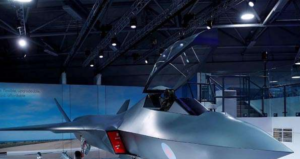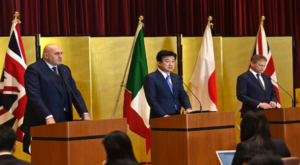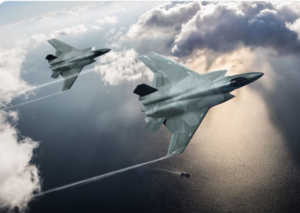Exporting Fighter Jets and Revising Defense Guidelines
On Tuesday, Japan’s Cabinet approved a proposal to offer for sale future next-generation fighter jets, developed in collaboration with Britain and Italy, to other countries.
This decision marks a departure from Japan’s postwar pacifist stance and aims to solidify its involvement in the joint fighter jet initiative while bolstering its arms industry and global security role.
The contentious move to permit international arms sales coincides with a revision to Japan’s guidelines on arms equipment and technology transfer, allowing jointly produced lethal weaponry to be exported to countries beyond the project partners.
Chief Cabinet Secretary Yoshimasa Hayashi underscored that these alterations are deemed necessary given Japan’s security landscape, while emphasising that the nation’s commitment to pacifist principles remains steadfast.

“To ensure the development of a fighter aircraft meeting essential performance standards and safeguarding Japan’s defence, it’s imperative to export finished products to nations beyond our partners,” Hayashi informed reporters. He emphasised that Tokyo will enforce a rigorous approval procedure for jet sales. “We’ve unequivocally shown our commitment to upholding our fundamental principles as a peaceful nation,” he asserted.
Japan’s Shift in Arms Policy: From Pacifism to Strategic Collaboration
For years, Japan has maintained strict limitations on arms exports in accordance with its pacifist constitution. However, in response to escalating regional and global tensions, particularly emanating from neighbouring China, Japan has swiftly moved to deregulate its arms trade.
The decision regarding jets marks Japan’s inaugural opportunity to export jointly produced lethal weaponry to other nations.

Collaborating with Italy and the U.K., Japan is engaged in developing an advanced fighter jet to replace its aging fleet of American-designed F-2 fighters and the Eurofighter Typhoons utilized by the U.K. and Italian armed forces.
Previously pursuing an indigenous design known as the F-X, Japan opted in December 2022 to merge its endeavors with a British-Italian initiative named the Tempest, slated for deployment in 2035. This joint endeavor, termed the Global Combat Air Program or GCAP, is headquartered in the U.K.
Japan’s New Fighter Jet: Balancing Security and Scrutiny
Japan anticipates that the new aircraft will provide advanced capabilities necessary to navigate escalating tensions in the region, affording it a technological advantage vis-à-vis regional competitors such as China and Russia.
Due to its wartime history as an aggressor and the subsequent devastation following its defeat in World War II, Japan adopted a constitution constraining its military activities to self-defense. Historically, the country maintained stringent policies restricting military equipment and technology transfers, alongside a blanket ban on exporting lethal weaponry.

Critics of Prime Minister Fumio Kishida’s administration have denounced the commitment to the fighter jet project, citing a lack of transparency in explaining the decision to the public or seeking approval for this significant policy shift.
In response to these concerns, the government has implemented measures to assuage fears. Initially, exports of jointly developed lethal weaponry related to the jet will be restricted, with assurances that no sales will be permitted for deployment in active conflict zones.
Japan’s Arms Export Shift: Guideline Clarifications
Furthermore, the government has clarified that the revised guideline currently pertains solely to the jet project and that any expansion of scope would necessitate Cabinet approval. Additionally, potential buyers will be limited to the 15 nations with which Japan has entered into defense partnership and equipment transfer agreements.
The timing of this change coaincides with Prime Minister Kishida’s forthcoming state visit to Washington in April, during which he is anticipated to emphasize Japan’s preparedness to assume a more substantial role in military and defense industry collaborations.
In addition to reinforcing Japan’s defense capabilities, exports would serve to invigorate the country’s defense industry, which traditionally focused solely on fulfilling requirements for the Self Defense Force. Prime Minister Kishida aims to bolster the military, and despite efforts made over the past decade, the industry has encountered challenges in attracting customers.










